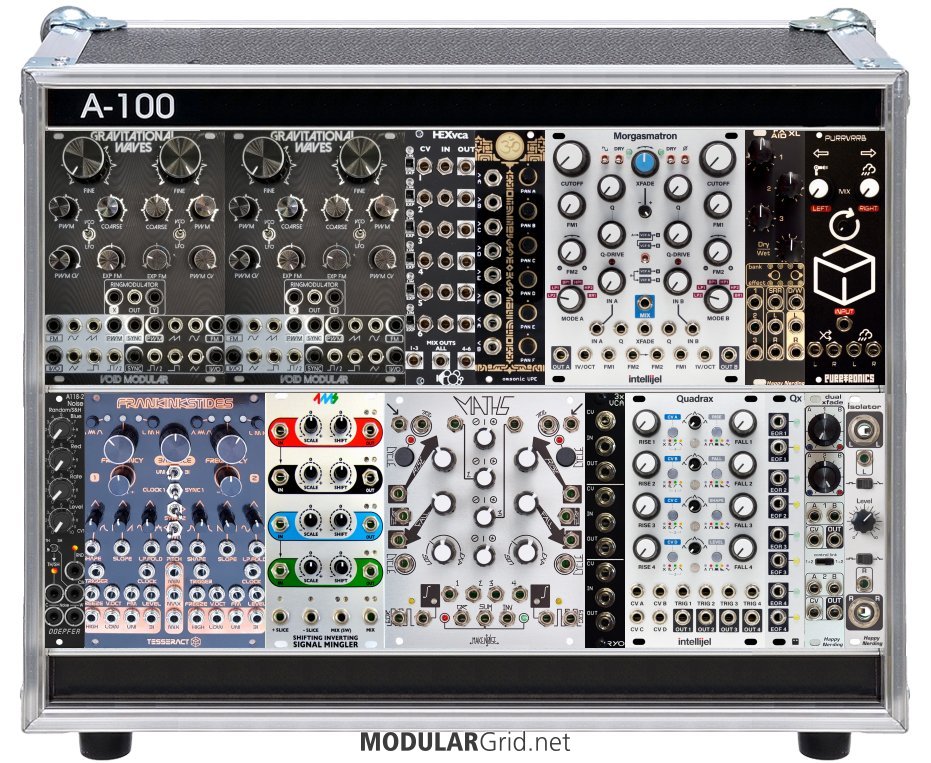(try #2...hate how this thing loves to eat posts)
Jim answered the thing about "incomplete power consumption specs"...my suggestion would be to go to the website for the module(s) in question and check to see if they have the current specs, or whether they have an online or DLable manual that has those. And if you DO find 'em, come back here and fix the listing...because one of MG's best strengths is its crowdsourcing of information to keep the place comprehensive.
As for the drums...I can't endorse this. For one thing, having drum modules and sequencing and all of that in this small a build will crowd out modules that can make the drone synth aspect stronger. My recommendation would be to go with an external drum machine or two, locked up with some sync method. Also...your two Tiptop drum modules here run $380, while at the same time you can get Roland's redux of the TR-808 for a mere $19 more. Or you could just as well wait for Uli to drop B.'s version of the 909. Either way, this is really the right way to go...function AND ergonomics all considered. There's also a bunch of things in there that won't quite work for this, or won't work in the way you expect.
So...I banged on this for a bit, changed a bunch of stuff, and this resulted:

Now that's a lot better, as far as drone instruments go. I got rid of the Red Square VCO in deference to a pair of VOID's Gravitational Waves dual VCOs with ring modulators + a bunch of crossmod tricks. And interestingly, they cost exactly $1 more together than the one Red Square. Following those is a Bubblesound Hex VCA for level control of SIX inputs...which means you could take a single waveform from each VCO + each ringmod, or double up different waveforms...bunches of timbral possibilities there...and then "strum" through them with modulation signals. After the Hex VCA is a fixed-level panning mixer from Omsonic (the VCAs handle levels here) to set up your stereo field. This gets fed to the Morgasmotron after that. Then the Morg's A and B outs can go to the FX Aid XL while at the same time the mono MIX out can go to the Purrtronics spring emulator. The end of the audio path is just below this, where a VC stereo crossfader can accept CVs for fading between the FX Aid and spring outs, feeding this to the Isolator for output. As for the wet/dry balances, those get controlled on the FX modules.
Now, the modulation section here starts with the A-118-2, then Tesseract's FranKinksTides dual Tides clone with some additional Kinks circuitry handles long-period modulation. The SISM after this allows you to use CV to control all sorts of modulation tampering and combination. Then Maths, followed by a triple linear VCA for CV over modulation levels. Then a Quadrax/Qx combo allows you to do very complex envelope/LFO/function gen activity.
This is intended as a drone-specific instrument, really. Loads of ambient drone potential, plus there's ample modulation to allow plenty of internal changes to those drones. And with the dual FX/crossfade end stage, this has the potential for a lot of weird stereo field depth trickery, too, such as moving from the Morg's A and B via a swirly foreground chorus to its MIX out into a deep, blurry reverb...sort of like the mixing equivalent of falling down a well, if you like.

